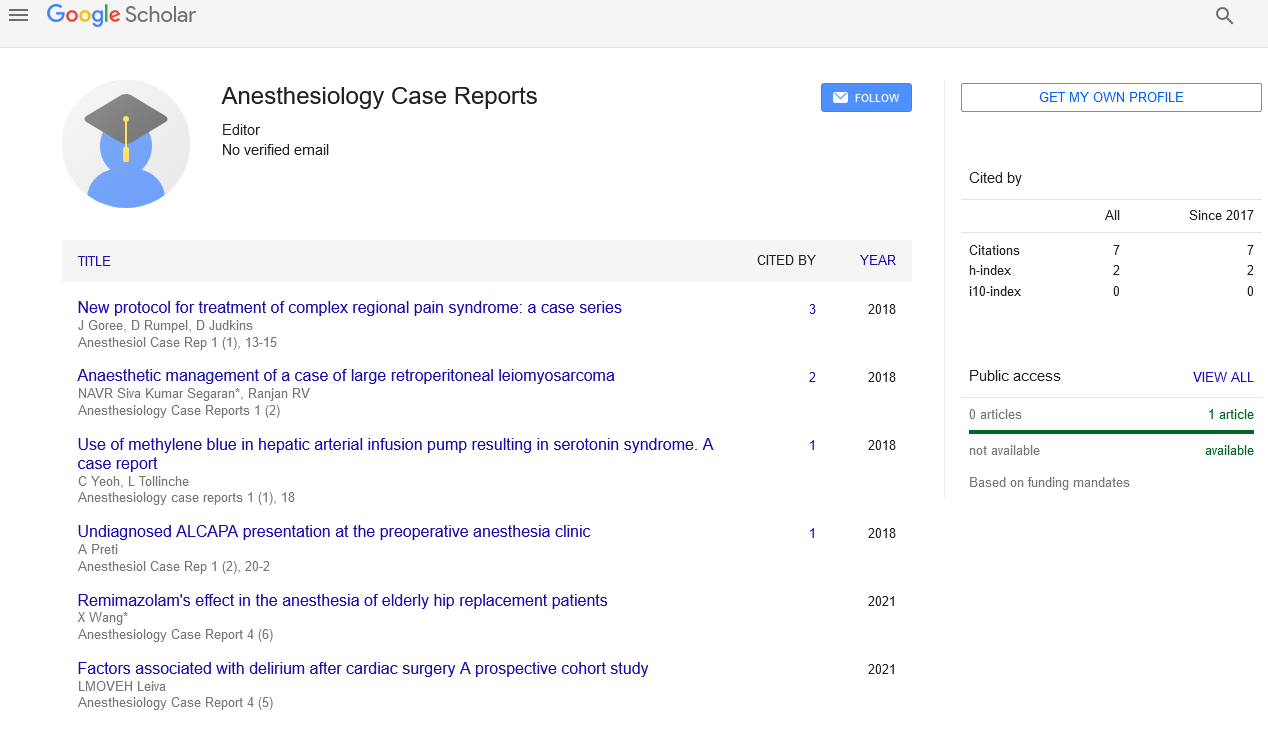A randomised trial on the effects of co-administering propofol with clonidine and ketamine duringcolon cancer surgery
Received: 01-Feb-2023, Manuscript No. pulacr-23-6674; Editor assigned: 02-Feb-2023, Pre QC No. pulacr-23-6674 (PQ); Accepted Date: Feb 26, 2023; Reviewed: 15-Feb-2023 QC No. pulacr-23-6674 (Q); Revised: 17-Feb-2023, Manuscript No. pulacr-23-6674 (R); Published: 28-Feb-2023
This open-access article is distributed under the terms of the Creative Commons Attribution Non-Commercial License (CC BY-NC) (http://creativecommons.org/licenses/by-nc/4.0/), which permits reuse, distribution and reproduction of the article, provided that the original work is properly cited and the reuse is restricted to noncommercial purposes. For commercial reuse, contact reprints@pulsus.com
Abstract
With the addition of clonidine and ketamine to TIVA propofol, analgesic effects can be further enhanced, resulting in an even more potent anaesthetic without endangering patient safety. The goal of this study is to ascertain if a propofol infusion in combination with clonidine and ketamine is more effective at reducing IL-8 levels, maintaining surgical stability, and reducing postoperative pain and morphine use.
Key Words
TIVA; TLIP
Introduction
The immune, endocrine, and metabolic systems change as a result of surgery-induced damage. These alterations are caused by a variety of factors, including cytokine release from traumatized tissue, afferent neuronal stimulation from the surgical site, and activation of cellular and humoral immune pathways. The stress response brought on by surgical trauma can be lessened by anesthesia, both general and regional. Anesthesia can prevent the body from releasing stress chemicals like cortisol and adrenaline, which can enhance the body's stress reaction during surgery and decrease the body's response to pain. In comparison to the traditional TLIP block, the modified TLIP block is simpler to execute and has a better local anaesthetic distribution [1-3]. The modified TLIP block may be an alternative to lessen the need for post-spinal decompression surgery and to lessen problems from opioid use and postoperative discomfort. Analgesic side effects are frequent and may be deadly in people with cirrhosis of the liver. Due to increased splenic platelet sequestration and decreased liver thrombopoietin synthesis in cirrhotic individuals, thrombocytopenia frequently affects them. In this situation, regional anaesthesia may significantly increase the risk of bleeding or hematoma. The management of pain in patients with liver failure, hepatic cirrhosis, and individuals with thrombocytopenia urgently requires the use of appropriate analgesic medications and methods. The pituitary is changed as a result of anesthesia's inhibition of sympathetic and nerve fibers, which causes the adrenal gland to grow. Total intravenous anesthesia, which entails giving propofol and opioids via target-controlled infusions, dominates the field of anesthesia today. Because it is more dependable and predictable than other techniques, complete intravenous anesthesia is the reason for this. Additionally, it enables more accurate management of the patient's anesthetic level and the flexibility to change the dose as necessary throughout the surgery. Propofol is the drug most frequently used for Total Intravenous Anesthesia (TIVA). Propofol is the medication that is most frequently used for TIVA. Some benefits of propofol include its short onset and speedy recovery. TCI plasma concentrations are anticipated to be more consistent when combined with TIVA. To increase the effectiveness of propofol TCI in producing the triad of anesthesia, some studies have paired it with clonidine or ketamine.
References
- Jayaram A, Bowen MP, Deshpande S, et al. Ultrasound examination of the stomach contents of women in the postpartum period. Anesth Analg. 1997;84(3):522-6.
[Google Scholar] [Crossref]
- Perlas A, Davis L, Khan M, et al. Gastric sonography in the fasted surgical patient: a prospective descriptive study. Anesth Analg. 2011;113(1):93-7.
- Fujigaki T, Fukusaki M, Nakamura H, et al. Quantitative evaluation of gastric contents using ultrasound. J Clin Anesth. 1993;5(6):451-5.





